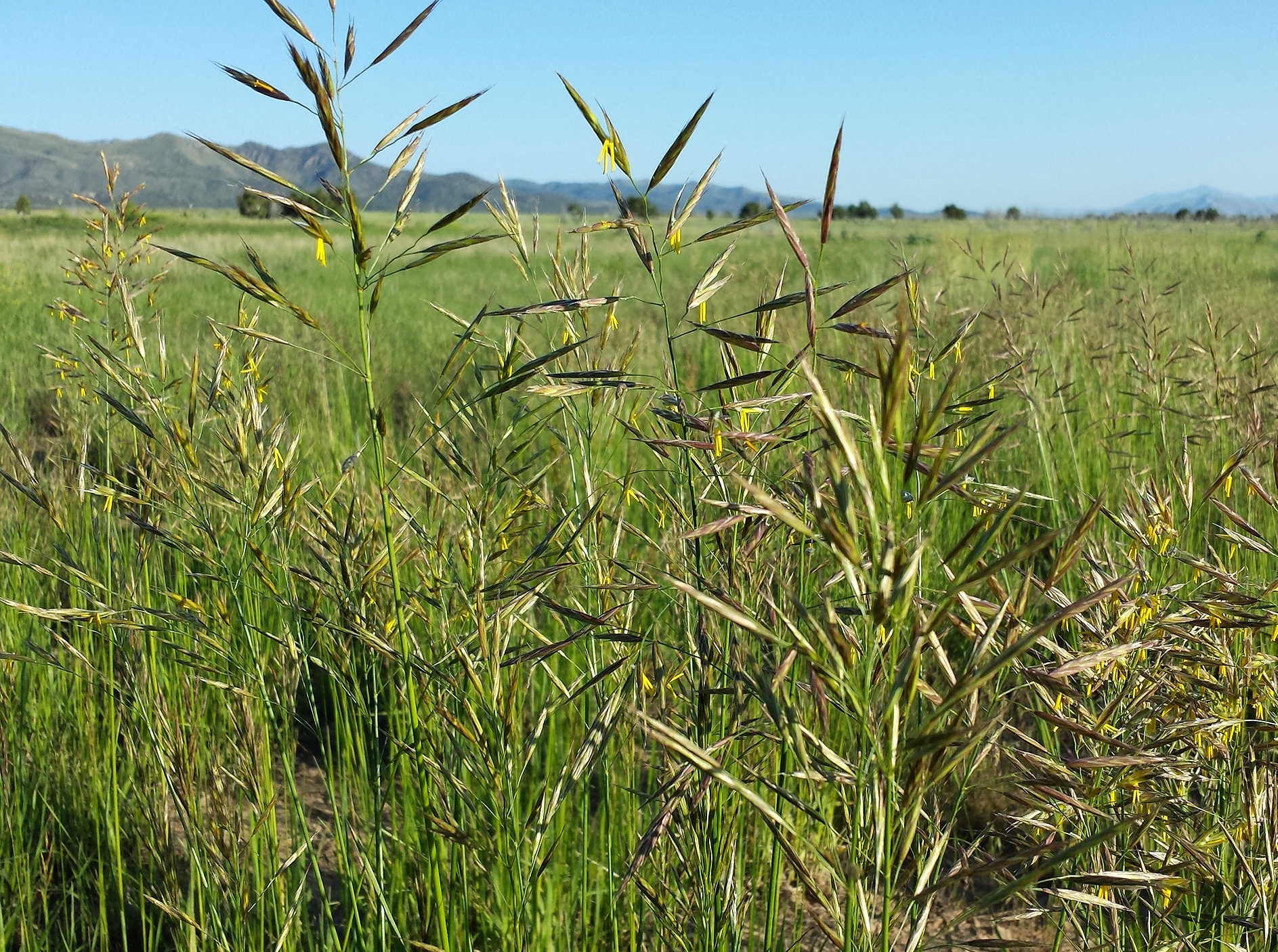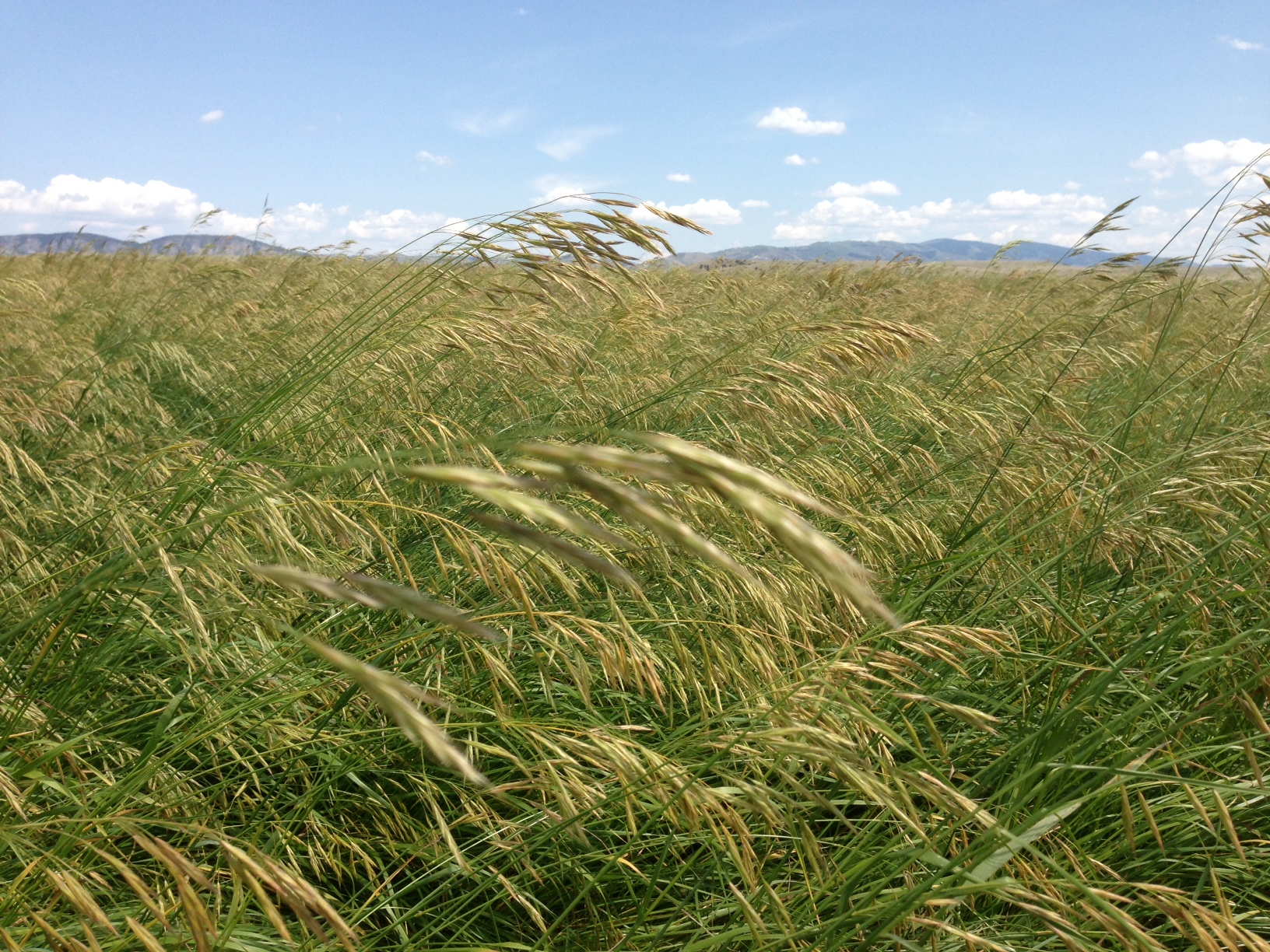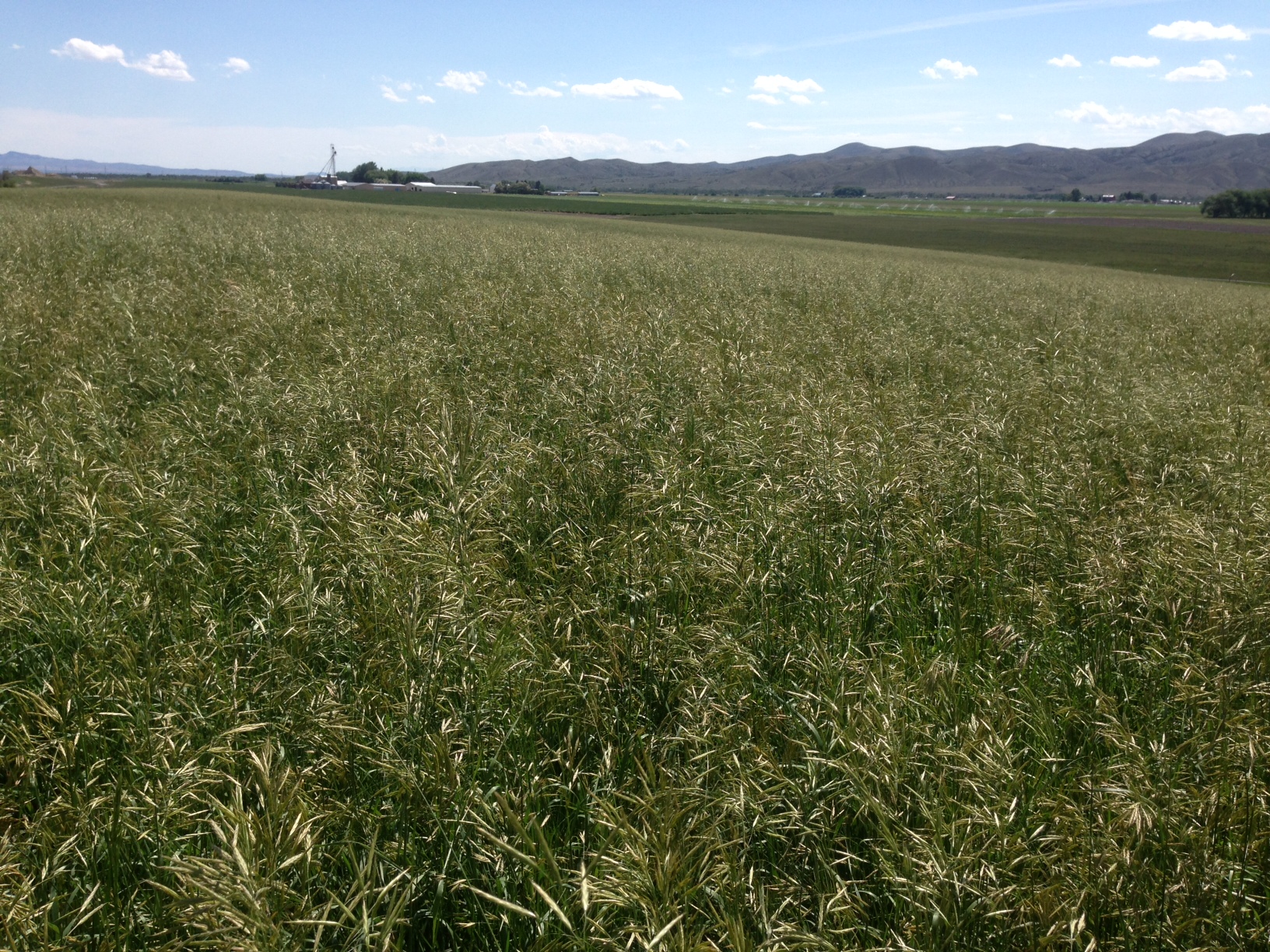BROMUS biebersteinii (Meadow brome)
Formerly Bromopsis biebersteinii. Cool season, perennial open sod-former with short rhizomes. Adapted to most sites where water is adequate but performs best on moderately deep, well-drained moist soils. Long-lived and very winter hardy. Primarily used as a pasture component in grass and grass-legume mixtures. Spring green-up is 2-3 weeks earlier than other common pasture grasses. Excellent year-round forage. Use in dryland pastures in areas receiving greater than 14 in. of annual precipitation. Varieties listed below.
DISTRIBUTION / ADAPTATION
INFORMATION & ATTRIBUTES
Family: Poaceae
Duration: Perennial
Growth Habit: Graminoid
Native Status: Introduced
Season: Cool
Growth Form: Bunchgrass
Mature Height: in.
Annual Precipitation: 48 in.
Drought Tolerance: Medium
Shade Tolerance: Intolerant
Elevation:
Fire Resistance: No
Fire Tolerance: High
SOIL ADAPTATION
Coarse Texture: Yes
Medium Texture: Yes
Fine Texture: Yes
Salinity Tolerance: Low
CaCO3 Tolerance: Low
pH Range: 5.7-8.5
SEEDING NOTES
Seeds per Pound: 86,800
Seeding Rate: PLS lbs/acre
Season: Spring/Fall
Days to Germination:
VARIETIES
Cache - Enhanced seedling establishment and increased yields on both irrigated and semi-irrigated pastures in the western U.S. Improved forage production under drought. (Released 2004, origin: Regar, Fleet and Paddock varieties)
High West - Developed from populations with increased crude protein content and forage yield. Use on both irrigated and semi-irrigated hayfields and pastures in the western U.S. (Released 2017)
Macbeth - Similar in forage production to Fleet, Paddock and Regar, but with significantly higher seed yields. (Released 2001, origin: MT)
Paddock - Slightly more resistant to silver top than Regar. Similar pasture and hay yields to Fleet and Regar; seed yields are slightly lower than Fleet. Good vigor and winter hardiness. (Released 1987, origin: Krasnador, former USSR)




